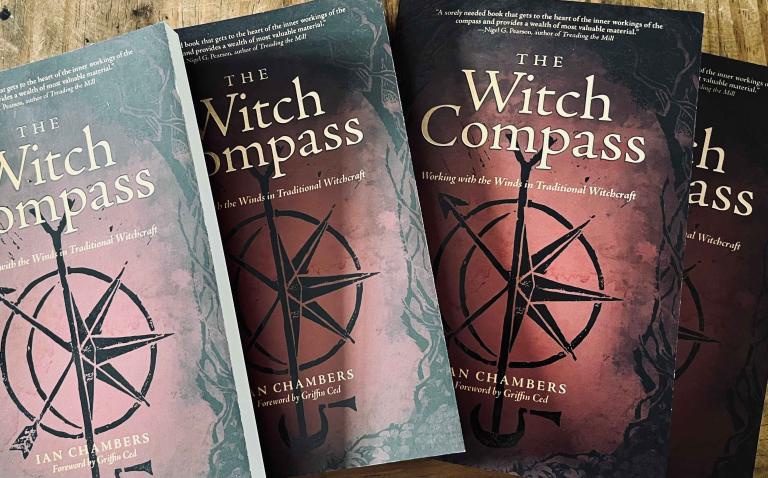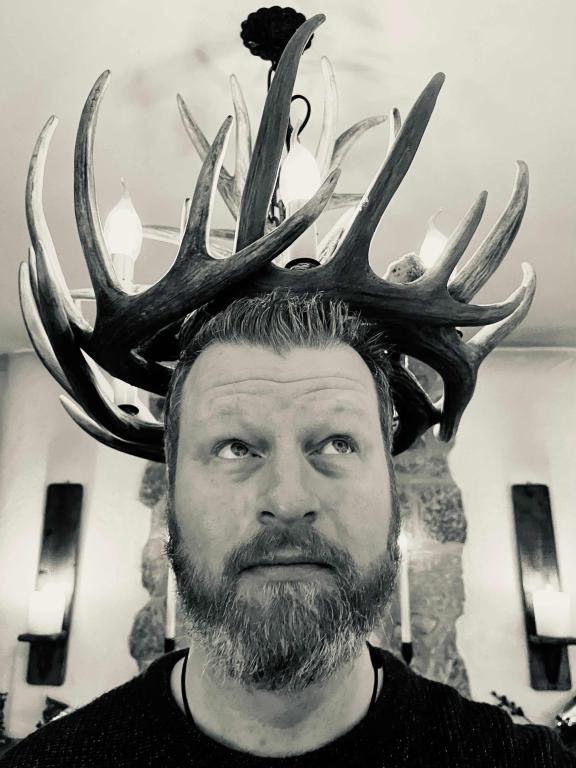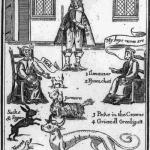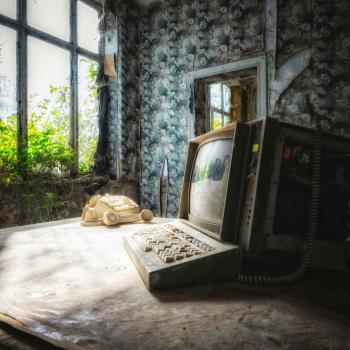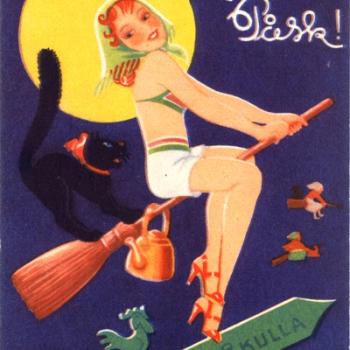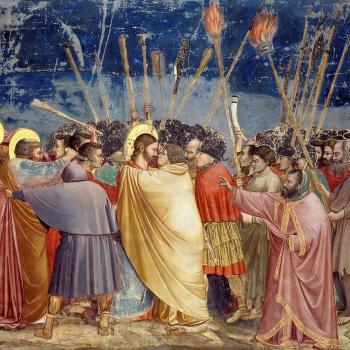The figure of the devil, the Black Man of the Sabbat, the adversarial force that presides over all witchery, has become a popular topic for discussion of late. The following is an extract from my book, The Witch Compass: Working with the Winds in Traditional Witchcraft, published by Llewellyn. Signed copies are also available from the Surrey Cunning website.
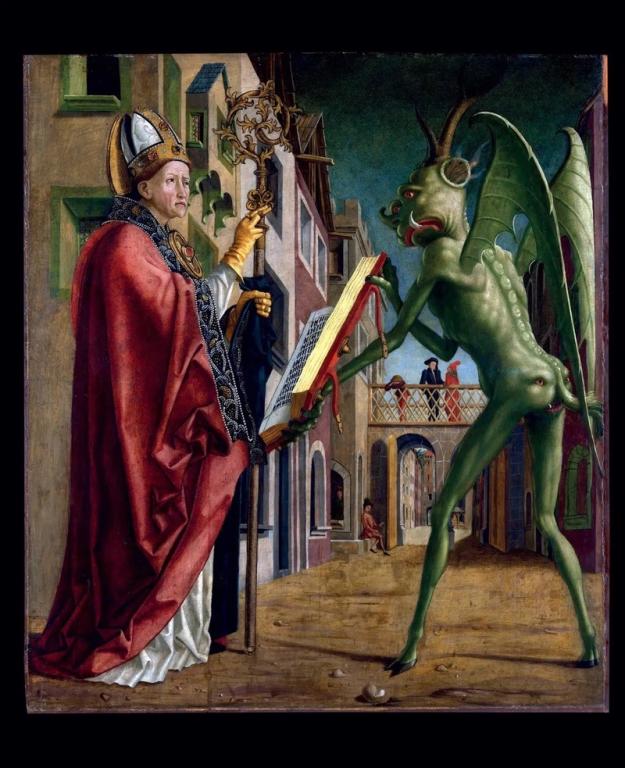
Within the folklore and custom of the common man, we must remember that the Devil manifests a force that challenges the status quo, driving evolution—a necessary agent of change—that encourages us, through the trickster’s repertoire of turns, to grow and adapt to circumstances. His way is not one of comfort but is transgressive, reconditioning, liberating through casting off the cuirass of expectation and guilt, adopting instead the resplendent raiment of potential. When you have lost everything, you are made free to do anything. All potentiality is his promise and gift; the choice is yours alone. It is to this figure that we now approach, the initiation of the Witch Father.
The role of the Devil in the early medieval period incorporated a function similar to, and reflecting, the Old Testament figure of the “Adversary”: Satan. In this capacity, the diabolic rôle of the “Adversary” can be seen through the formula of opposition, being the one who advances or evolves through the use of the challenge, of antithesis. As the English chess master Samuel S. Boden (1826–1882) observed, “If you are desirous to learn, always play with a strong player, rather than with an inferior one.”[1]
Within the prevailing worldview of the folkloric past, the position of the Devil became allied with that of Lucifer and attained chthonic rulership in the process. Throughout the body of lore associated with the Devil, we find Him as the “Angel of the Crown,” “hakathriel,” before his fallen state, when He is transmuted into the “bringer of light,” the son of the Morning Star, Lucifer.[2] Furthermore, tradition holds that the emerald jewel which fell from the crown of Lucifer is the keystone of occult lore, the Tabula Smaragdina (Emerald Tablet), or sometimes the Holy Grail itself.[3]
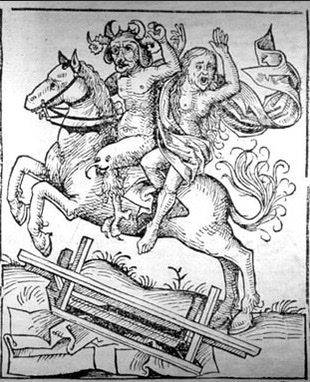
The folkloric Devil, as he is found in witch lore, is the champion of transgression and inversion, the agent of change and evolution, and the fire that inspires or challenges us to commute lead into gold. He is the chief heretic, from the Greek hairesis, meaning to choose for oneself.
In a world dominated by the oppressive structures of the state and church, allied in subjugating the medieval and early modern common class of people, the figure of the Devil emerged in witchcraft as a liberating figure, a rebellious leader with the promise of opposing the harsh stricture that was being imposed.
Indeed, so firmly fixed was the Devil as the spirit of rebellion and heresy that twentieth-century activist and writer Saul D. Alinsky (1909–1972) evoked this very angel in his manual for uniting low-income communities and affecting change against the abuses of power. In Rules for Radicals, Alinsky acknowledges Lucifer as the first insurgent, whose rebellion against the establishment accomplished rulership over his own kingdom and instigated the model of counterculture in the process.[4]
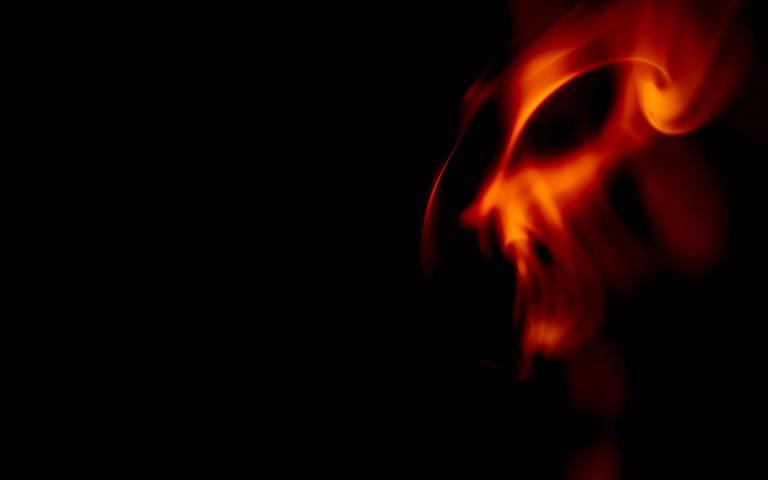
Footnotes:
- [1] 5. An Amateur [Samuel S. Boden], A Popular Introduction to The Study and Practice of Chess. Forming a Compendium of the Science of the Game (London: Charles J. Skeet, 1851), 22.
- René Guénon, The King of the World (Ghent, New York: Sophia Perennis, 2004), 28.
- Guénon, The King of the World, 28.
- Saul Alinsky, Rules for Radicals: A Practical Primer for Realistic Radicals (New York: Vintage Books, 1989), ix.
The Witch Compass: Working with the Winds in Traditional Witchcraft
The Witch Compass is Ian Chambers’ first book, published in 2022 with Llewellyn, and is available through all good booksellers. Signed copies of The Witch Compass are available from the author’s website: surrey cunning.co.uk
Explore the compass of the eight winds, a magical circle at the heart of Traditional Witchcraft. More than a tool for protection or raising power, this framework provides the ritual means to traverse the worlds and a mythic landscape that can be accessed at any point in time and space. Traditional Witch Ian Chambers teaches how the Witch Compass represents an entire worldview, a cosmological map, and a method for magic and revelation. He helps you develop your own compass and use it for divination, spirit work, and practical sorcery. This book shows you the world through the lens of your Witch Compass and reveals the many realms and spirits available to you.
“With this invaluable book, the aspirant unto traditional Craft and the seasoned practitioner alike are carefully guided through the workings of the compass as the map, via which the Crafter may traverse magical realities, encounter spiritual presences, and commune with ultimate Truth.” – Gemma Gary, author of Traditional Witchcraft, A Cornish Book of Ways.
“A scholarly, inspiring, and eminently informative work. I give it my highest recommendation.” – Lon Milo DuQuette, author of The Magic of Aleister Crowley.
“I found this a most fascinating and informative book, describing as it does the rationale behind the actual working of the compass, with plenty of practical demonstrations and exercises to enable the reader to experience the compass for themselves…This is a sorely needed book that gets to the heart of the inner workings of the compass and provides a wealth of most valuable material for both the beginner and more experienced practitioner alike. I congratulate Ian on producing an approachable and understandable book which will add greatly to the sum of available knowledge on a sometimes obscure and difficult subject.”―Nigel G. Pearson, author of Treading the Mill.
